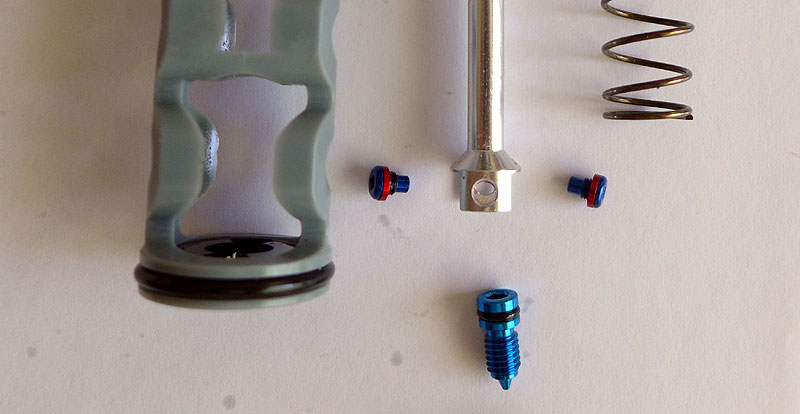There's plenty of misinformation and hearsay out on the interwebs about how the Rockshox RCT3 damper works, but almost a complete lack of details. I've completely disassembled by RCT3 to understand how it works. Here are my findings.
Overview
The RCT3 damper only controls compression and platform damping. Rebound damping is handled by the rebound damper rod at the bottom of the fork. Oil flow through the RCT3 damper is generated by the volume displacement of the rebound rod as it enters further into the stanchion on compression. The rebound damper piston/checkplate arrangement looks like it flows enough oil on compression that it is not significantly contributing to compression damping.

The blue knob has three positions with detents:
- Open;
- Threshold; and
- Lock.
There is also a silver adjuster that controls low speed compression ("LSC").

Compression damping
The RCT3 damper features a shimmed compression piston with a tapered shim stack that sits below the platform damping spring tube so it can act (semi?) independently in Open mode.
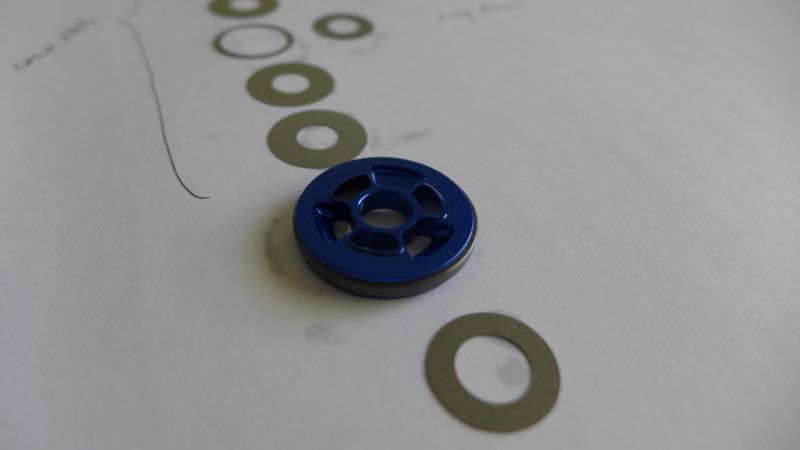
The LSC adjuster is of the port-orifice type and constricts flow through the center of the clamp bolt. This flow bypasses the compression shim stack but will push up against the platform tube in Threshold and Lock modes.
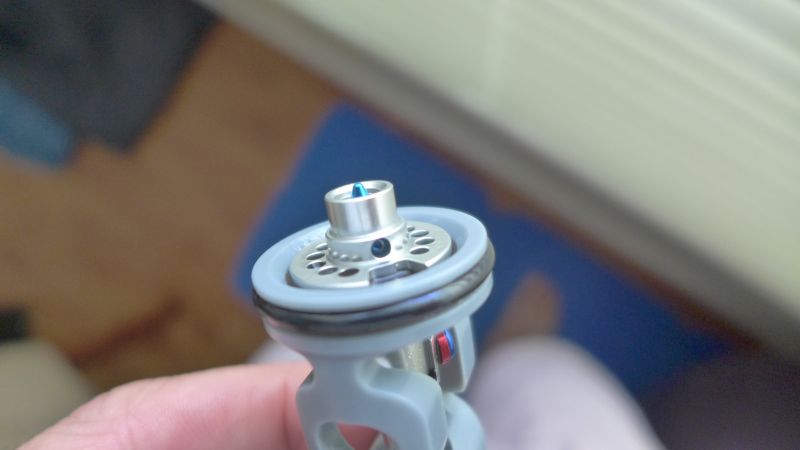
LSC needle removed from damper:
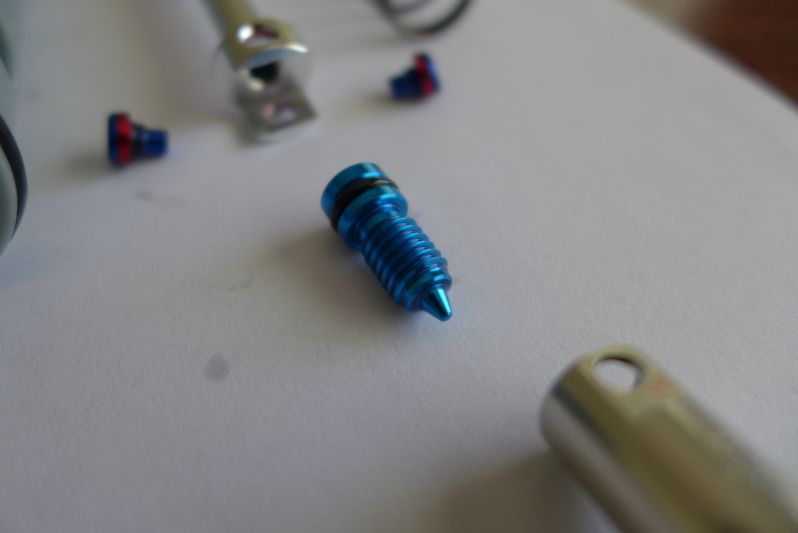
Compression stack is as follows (all shims 0.1mm thick with 8mm ID):
- 10mm clamp on push rod/platform valve;
- 13mm;
- 17mm;
- 4 x 19mm;
- 19mm x 16mm ring shim with 16mm center shim;
- 2 x 19mm;
- comp piston;
- 17mm x 10mm ID check valve.

Platform
In Open mode, two holes/slots are open in the base of the platform spring tube. This means, damping is primarily being handled by the compression shim stack and LSC bypass adjuster. Note: it is possible that even in full Open mode, the two slots may have an effect on damping for high speed compression events if they restrict flow. If a compression event causes such a flow then the platform spring tube would be forced to compress and open the platform valve to flow more oil.
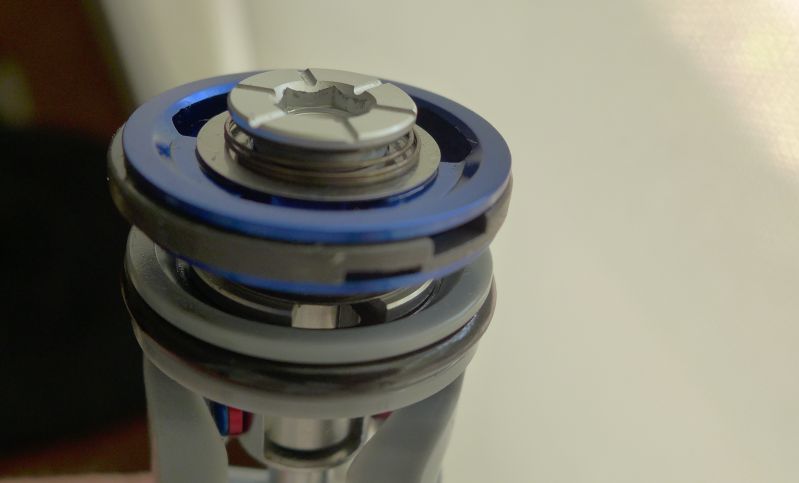
Here's another shot with the adjuster half way between Open and Threshold. Even though there are no detents between Open and Threshold in-between settings could be used to add some compression damping. Not sure if this would add LSC, HSC or both (probably both). It will also be in addition to the compressing damping through the comp valve.
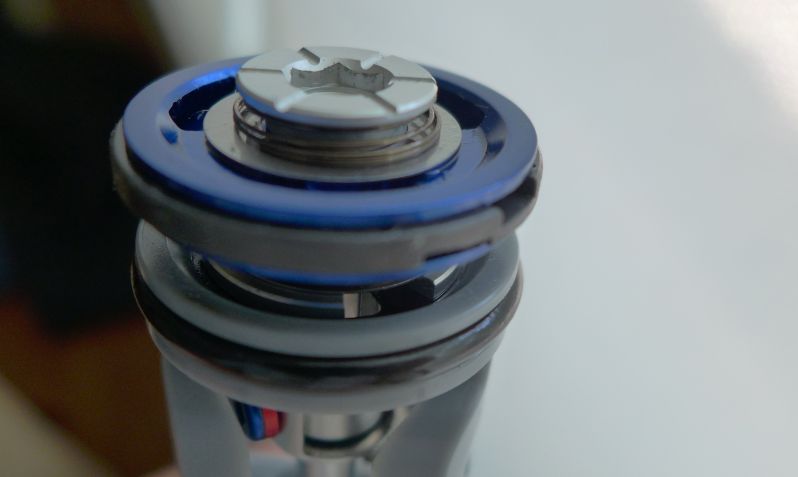
Here's a diagram I've made that shows with some clarity the compression piston / platform damper arrangement in the RCT3:
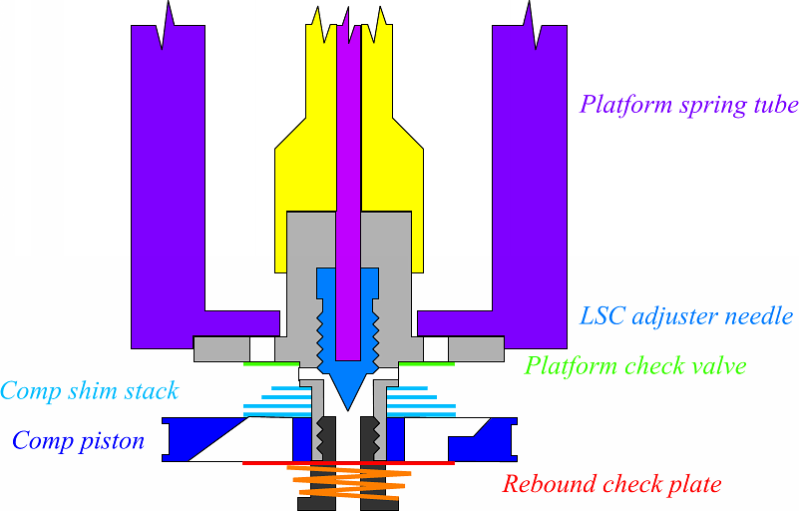
How do I upgrade to an RCT3 damper?
For SID forks from 2009 onwards (32mm stanchions), there are two version of the damper:
For newer Reba forks (2011+) buy this damper.
For Revelation forks get this damper.
If you've got an earlier 32mm SID Race with the port orifice rebound damper, it is well worth upgrading to the newer shimmed rebound damper from the Team/WC SIDs. So get this RockShox SID Team/WC Rebound Damper with Seal Head and Shaft, 32mm.
RCT3 forks on special
These guys on Amazon have the 100mm SID RCT3 forks for less than $400 - see RockShox SID RCT3 Crown Adjust Solo 100mm Air Fork, Black, 26-Inch
Newer RCT3 damper - 2014+
From 2014 onwards, the RCT3 damper was slightly modified to work in conjunction with the new "DIG" valve rebound assembly. The new DIG valve essentially added a mid-valve to the compression side of the rebound piston. The rebound piston sees much higher oil flow than the compression piston. The compression piston only sees an oil volume equivalent to the oil displaced by the rebound shaft. The rebound piston sees the volume of oil in the damper as it moves through the oil column.
If upgrading now, I'd get the:
Converting older RCT3 damper to newer RCT3 damper
If you've got the older style RCT3 damper and want to convert it to the newer style so you can use the DIG valve rebound rod then it's fairly straighforward:
- disassemble the RCT3 shim stack and remove 3 of the 4 19mm shims above the ring shim.

